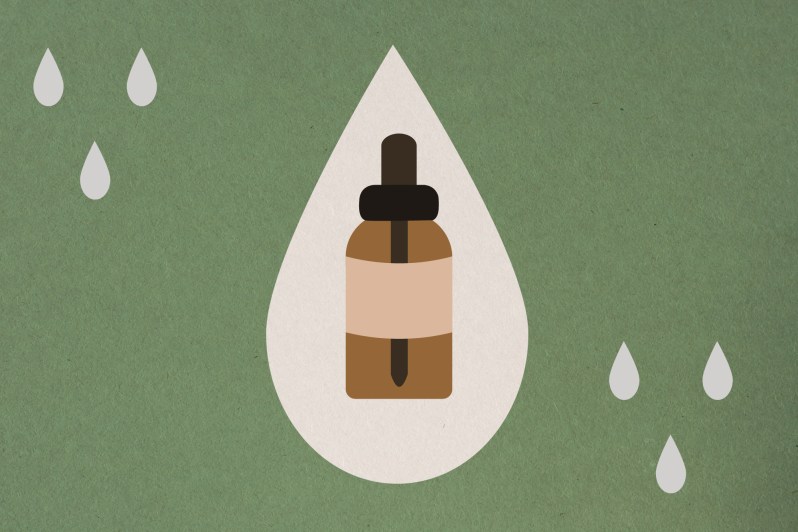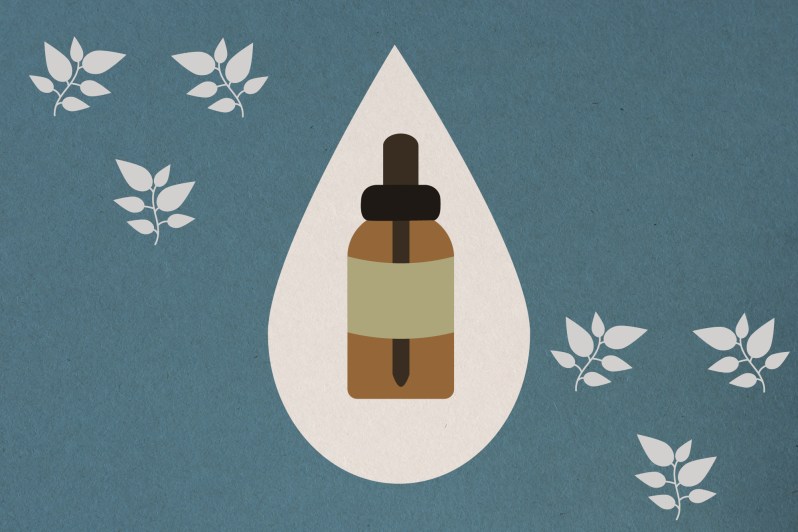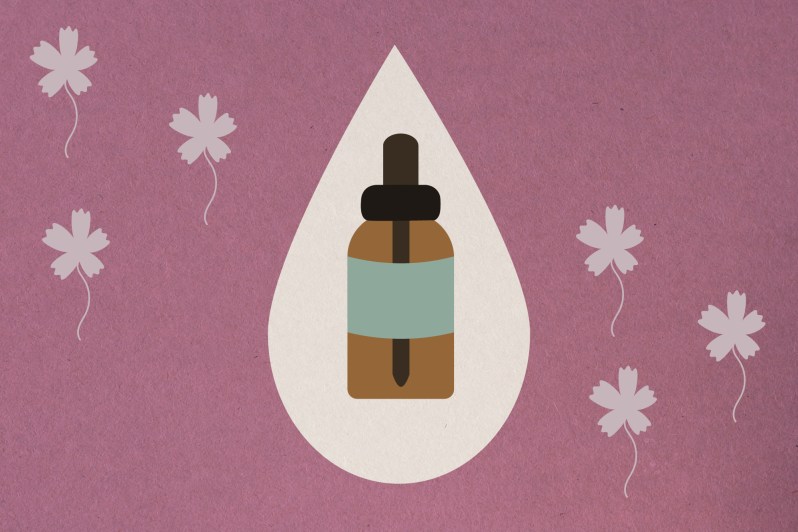When winter sickness strikes, it brings a Hobson’s choice: do you wait it out and hope that your immune system defeats the sniffles, congestion, and sinus pain? Or do you carpet-bomb your system with a collection of over-the-counter medicines and just deal with the fuzzy brain and fatigue that inevitably accompany them?
Good news — there’s a third option. Winter is the perfect time to explore the world of tinctures.

Herbal remedies such as tinctures offer a beautifully balanced approach to kicking sickness. They give your body just enough of a boost to beat the illness on its own, not only improving your symptoms, but actually making you more disease-resistant than before. And where over-the-counter medicines can become less effective the more you use them, herbal remedies only become more effective over time.
Herbal medicine comes in a variety of forms, including powders, tablets, capsules and teas. But for our money, tinctures are the best way to access the healing benefits of plants and ward off winter-borne illness the natural way.
What Is a Tincture?
A tincture is simply alcohol or another liquid infused with medicinal plants at a high concentration. Unlike tea, which has a much higher ratio of liquid to solid and is steeped for just a few minutes, tinctures are made by soaking herbs and other plants for weeks at a time, in order to extract the beneficial compounds in the plant.

Tinctures can be made from a single plant or a combination, and may include fresh or dried leaves, roots, bark, flowers, and/or berries from any given plant. Alcohol is the preferred medium for tinctures because it can extract plant compounds (such as resins and alkaloids) that are much less accessible in water. The amount of alcohol per dose is very low, about the same as if you drank a single glass of wine over the course of two weeks. But for those who are abstaining from alcohol, it’s usually fairly easy to find an alcohol-free tincture that uses glycerin as an extraction medium.
Why Take a Tincture?
Tinctures are among the best ways to ingest an herbal remedy. Where our bodies utilize only about 50% of herbal medicines in capsule and tablet form, taking a tincture lets you get about 98% of the herbal extracts. In addition, tinctures are far more potent due to the large concentration of herbs in a smaller dose. And while capsules take about 20-30 minutes for your system to digest and absorb, tinctures are quickly absorbed by the mucus membranes in the mouth, meaning you feel the effects much more quickly.

In addition, dried powdered herbs can lose potency over time, making them less effective and requiring higher dosage amounts. Whereas the liquid form of the tincture preserves the properties of the herbs for much longer.
Finally, a tincture typically works much faster than a capsule or powder. While every body is different, it’s normal to experience relief from your symptoms within 30 minutes of taking the tincture. The more you take throughout the day, the more improvement you’ll see.
How to Find the Best Tincture
When you first get started with tinctures, it’s advisable to purchase them from a reputable company rather than make your own. That way, you’ll know what the tincture is supposed to look, smell, and taste like, and how well it works for you. Look for bottles with a label that includes the following details:
• Common name of plant
• Latin name of plant
• Plant part used (include whether it is fresh or dried)
• Plant source (where it was foraged or grown)
• Type of spirit and alcohol percentage
• Batch number
• Date
• Any special instructions (e.g., external use only)
Once you’re more familiar with tinctures, making your own is easy and fairly inexpensive, and sometimes can produce even more effective remedies because they are more fresh. Recipes abound on the internet, but the easiest approach is to mix your plant (fresh or dried) in a jar or bottle with high-proof alcohol such as Everclear or vodka, tightly seal the jar and let it sit for a few weeks (shaking once a day). After about 3-4 weeks, pour the liquid through a coffee filter or cheesecloth to get rid of the solids, then take as you would a purchased tincture. (Again, it’s a good idea to start with a smaller dose, just to make sure you don’t have an adverse reaction.)
How to Take your Tincture
The best way to take your tincture is sublingually, since the arterial blood supply under your tongue provides the quickest absorption into the bloodstream. Simply open up, lift your tongue, and empty the dropper or spoon into the base of your mouth behind your teeth.

If you’re not comfortable doing it this way, or the taste is too strong, you can also drop the dose into a glass of liquid and drink it, or even mix it into food. Just be advised that it may take longer to feel the effects this way, since your body has to digest the food or drink before it can access the compounds in the tincture.
A Word of Advice
Tinctures tend to be accompanied by a stronger taste than capsules. With some herbs, this taste makes for a distinctly unpleasant experience. However, taking the tincture sublingually can substantially reduce the taste you experience, since you’ll be avoiding contact with your taste buds. Another option is to drop the tincture into another liquid like water or even juice, thereby diluting the flavor.
If the directions on the tincture bottle seem like a lot, that’s normal. To be effective, most tinctures require ingestion of about 3 or 4 droppers-worth every few hours, at least for the first day or two. That said, if you’re new to herbal medicine, it’s a good idea to start lower than the recommended dose, just to ensure that your body doesn’t have an unexpected reaction. In addition, it is possible to take too much tincture — if the bottle advises discontinuing use after a certain amount of time, don’t go rogue. Finally, always do your research on the tincture you’re planning to take to make sure the herbs in it aren’t related to other plants that you might be allergic to, or interfere with any other medications you’re taking.
Here are a few of our favorite tinctures for dealing with commonplace winter illness:
| St. John’s Wort | Garlic |
| Tulsi (Holy Basil) | Elderberry |
| Ginseng | Milk Thistle |
| Damiana | Comfrey |
| Echinacea | Astragalus |
St. John’s Wort
One of the most highly studied herbal medicines today, St. John’s Wort has proven highly effective in treatment of emotional issues like seasonal affective disorder, as well as anxiety and depression, thanks to how it works with serotonin. To be effective, you have to use an extract of the whole plant, so look for that indicated on the tincture you’re considering.
Tulsi (Holy Basil)
This uplifting, happy herb is ideal for winter blues, sluggishness, and lack of motivation. If you’re finding it hard to roust yourself from bed on cold, gloomy mornings, a few drops of tulsi tincture will put a spring in your step.
Ginseng
For seasonal affective disorder, poor circulation, sluggishness, and lack of energy, and just about everything else, the benefits of this root go back hundreds of years. It’s commonly identified with Chinese medicine, but American farmers used to forage for it in the woods of Michigan and Wisconsin, then sell it to city folk at a steep markup. Often lauded as a cure for everything that ails you, ginseng has been proven to help improve circulation as well as energy, focus, and even — ahem — erectile dysfunction. Herbalists recommend looking for tinctures of “6-years-grown” ginseng, since harvesting the root any younger can mean lower concentrations of its effective phytomolecules.
Damiana
A shrub that grows wild in the West Indies and Central America, this peppery herb kickstarts the blood moving in your veins, not only helping with ice block feet and chills you can’t shake, but also improving your mood, boosting energy, and relieving stress. It’s commonly used to combat impotence and raise the libido. Don’t say we didn’t warn you.
Echinacea
This cold-fighting superherb can be used to fight any infection in the body, but is particularly effective against infections of the upper respiratory tract. By boosting the production of white blood cells, this herb is equally powerful in fighting viruses, bacteria, and inflammation. Echinacea is recognized as both “preventative and curative,” so you can take it even if you’re already sick.
Garlic
Pungent and warming, garlic helps to break up mucus in the body, making it specifically beneficial for respiratory congestion. The strong smell is created by the same compounds that fight disease: sulfur-containing acillins, which are antioxidant, antifungal, antibacterial, and even antiviral. We think that’s definitely worth risking bad breath for an hour or two. While some people simply pop a clove into their mouths and chew, infusing the raw garlic into a tincture will make it extra potent and more absorbable.
Elderberry
Multiple double-blind studies have shown over 90% of flu patients getting better within just 2 days of taking elderberry. This is thanks to the hemagglutinin protein in elderberry, which stops a virus from replicating by inhibiting its ability to penetrate cells. Unlike powders and capsules, which can contain the nausea-inducing elderberry seed, an elderberry tincture ensures that you’re only getting the good stuff to help fight off your flu symptoms.
Milk Thistle
Thinking of doing a winter-time cleanse? You might want to spend some time with this liver tonic herb first. Milk thistle’s active ingredient silymarin reduces the production of free radicals in the liver, freeing up the organ to do its job. Milk thistle also regulates blood sugar, which is important if you’re prone to skipping a meal, only to double down on the craft beer and pizza later.
Comfrey
Rich in calcium and Vitamin C, this herb combats inflammation, treating issues like sinusitis at the root. It also contains allantoin which helps sores and wounds heal more quickly — great news for those suffering from a raw, red skin thanks to too much nose-blowing.
Astragalus
This wonder herb has a 1,000-year history of fighting fatigue and illness. By replicating immune cells, it’s shockingly effective in improving your health from its very foundation. A side benefit: astragalus promotes youthful, revitalized skin.


